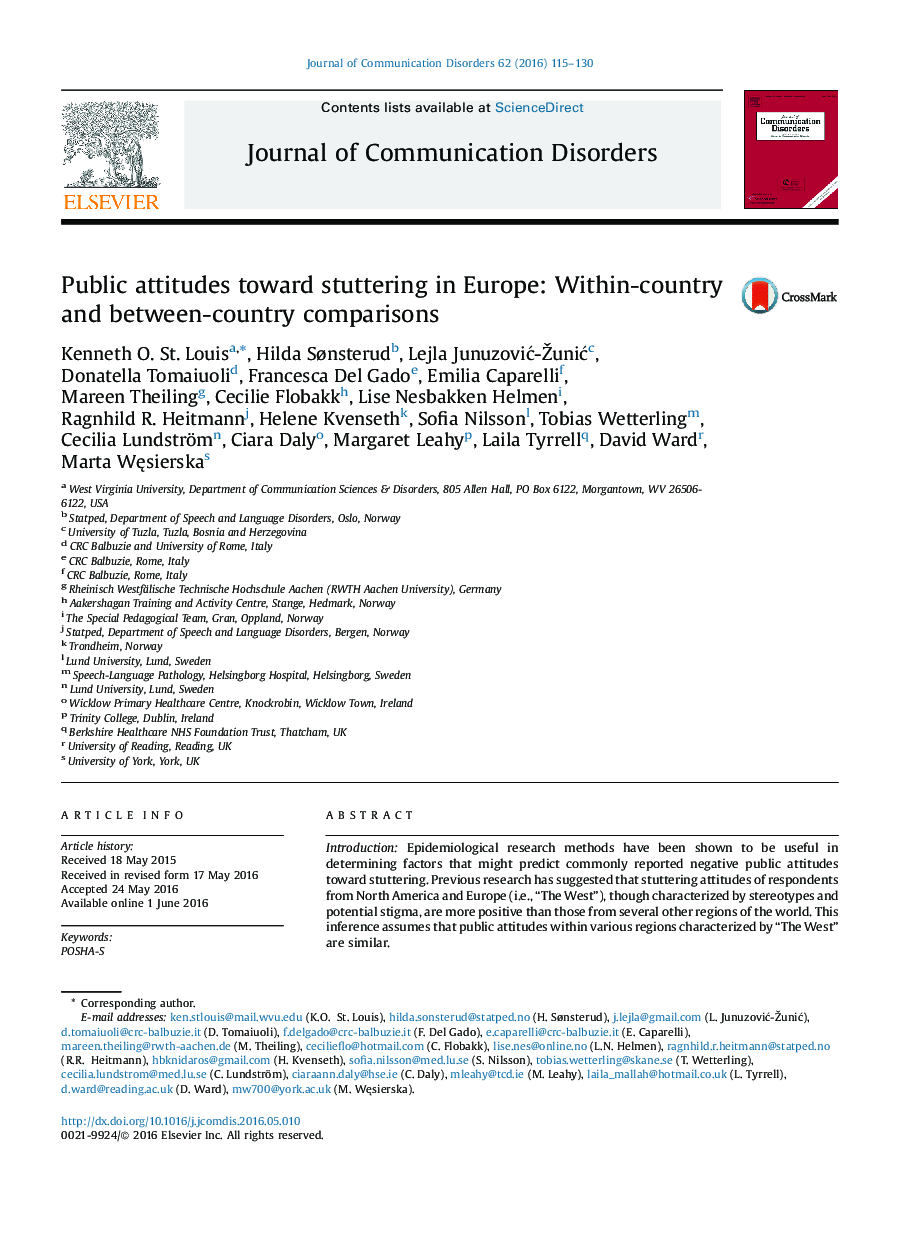| Article ID | Journal | Published Year | Pages | File Type |
|---|---|---|---|---|
| 910722 | Journal of Communication Disorders | 2016 | 16 Pages |
•Stuttering attitudes in Europe and North America have been assumed to be quite uniform.•Public attitudes toward stuttering within three European countries were remarkably similar.•Public stuttering attitudes between five European countries/regions were quite different.•Expected demographic variables did not predict the differences between countries/regions.•Yet-to-be discovered national variables likely are important in country/region differences.
IntroductionEpidemiological research methods have been shown to be useful in determining factors that might predict commonly reported negative public attitudes toward stuttering. Previous research has suggested that stuttering attitudes of respondents from North America and Europe (i.e., “The West”), though characterized by stereotypes and potential stigma, are more positive than those from several other regions of the world. This inference assumes that public attitudes within various regions characterized by “The West” are similar.PurposeThis study aimed to determine the extent to which public stuttering attitudes are similar or different both within regions of three different European countries and between or among five different European countries or similar geographic areas. It also aimed to compare these European attitudes to attitudes from 135 samples around the world using a standard measure.Material and methodsUsing convenience sampling, 1111 adult respondents from eight different investigations completed the Public Opinion Survey of Human Attributes-Stuttering (POSHA-S) in the dominant language of each country or area. In Study I, the authors compared attitudes within three different regions of Bosnia & Herzegovina, Italy, and Norway. In Study II, the authors compared attitudes between combined samples from Bosnia & Herzegovina, Italy, and Norway (with additional respondents from Sweden), and two other samples, one from Germany and the other from Ireland and England.ResultsAttitudes of adults from the three samples within Bosnia & Herzegovina, Italy, and Norway were remarkably similar. By contrast, attitudes between the five different countries or area were quite dramatically different. Demographic variables on the POSHA-S did not predict the rank order of these between-country/area differences. Compared to the POSHA-S worldwide database, European attitudes ranged from less positive than average (i.e., Italians) to more positive than average (i.e., Norwegians and Swedes).ConclusionFactors related to national identity appear to play a significant role in differences in public attitudes in Europe and should be explored in future research.
Graphical abstractFigure optionsDownload full-size imageDownload as PowerPoint slide
